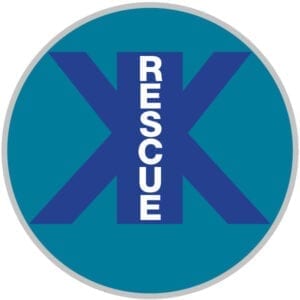Ice and Water Rescue
ICE & COLD WATER RESCUE STANDARD OPERATING GUIDELINES
PURPOSE: TO ESTABLISH GUIDELINES AND PROCEDURES FOR THE EFFICIENT CONDUCT OF ICE AND COLD WATER RESCUE OPERATIONS.
SCOPE: THESE PROCEDURES AND GUIDELINES WILL BE USED IN ANY WATER AND ICE RESCUE OPERATION WITHIN THE DEPARTMENT RESPONSE AREA AND ON MUTUAL AID CALLS.
PROCEDURE: UPON RECEIPT OF AN ALARM FOR A COLD WATER OR ICE RESCUE EMERGENCY THE DEPARTMENT WILL RESPOND WITH ALL AVAILABLE RESOURCES, INCLUDING PERSONNEL, COLD WATER RESCUE SUITS, WATER RESCUE ROPE, AND THE ICE RESCUE SLED.
The senior officer or member on the scene will establish incident command (IC). The incident commander is responsible for the following actions:
- Determine the number of victims, their condition and their last known location if they can not be seen from shore.
- Notify your dispatch center to establish radio control and the location of the command post.
Your communication center should notify the following immediately:
- Notify mutual aid departments with special consideration given to those with equipment and training in ice rescue/cold water rescue
- Notify Local ambulance service and nearest Advanced Life Support Unit
- Notify nearest hospital and Trauma Center with Life Flight capability
- Notify Local police for crowd and traffic control
- Notify Local dive teams & ranger/warden services
- Notify Any other services determined by the IC
- The IC will continue to direct operations of local and mutual aid companies until relieved by a competent authority
Safety of all personnel responding to the scene is paramount. Safety procedures will include but not be limited to the following:
- These procedures are for the safety and protection of human life. Animal rescues are at the discretion of the IC or Safety Officer and will only be attempted if the safety of all rescuers can be assured. Dog snare should be used. In pet rescue situations be prepared for the owner to attempt a rescue.
- All operations will be performed by trained personnel who are familiar with and physically capable of performing the duties and tasks required.
- Primary and back up personnel will be equipped with cold water and or immersion suits. Whenever possible the primary rescuer should be equipped with the Stearns I-595 ice rescue suit or equivalent. Primary rescuer using Ice Rescue Sled should leave hood down and wear an ice/water rescue helmet. This enhances hearing and protects head from injury.
- All personnel working in the Hot Zone within 25 feet from shore should be equipped with flotation. Either an ice rescue suit of PFD.
- Tether lines should be attached to the front D rings of the ice rescue suit and check to be sure carabiners and suit zippers are good to go. Appropriate shore crew will manage tether lines.
- Primary rescuer using the Ice Rescue Sled should be tethered to shore crew by attaching the end carabiner to D rings on the front of the suit. A second carabiner located approximately 8 feet down the rope will be attached to the rear of the Ice Rescue Sled.
- Primary and back up rescuers should be equipped with Pick of Life ice awls for their own use or used by the victim.
- Person involved in the rescue attempt should have a back up person to take over if needed.
- Rest and medical monitoring of all personnel in a warm vehicle should be provided.
- Lighting for the scene and personnel capable of hands free should be available for night operations.
- A water sample should be obtained near victims position and may be needed for medical evaluation. This sample should be transported with the victim.
Whenever possible a minimum of 8 to 10 personnel should make up an ice rescue team. This provides the IC - Safety Officer - Primary Rescuer - back up rescuer- two person back up and four person shore crew. However the Ice Rescue Sled can be safely deployed with two trained rescuers if additional personnel are not available or are responding to the scene. At no time should any rescuer attempt a GO CONTACT RESCUE without proper back up and a tether to shore wearing a cold water suit.
YOU MUST ASSES YOUR PERSONNEL, YOUR EQUIPMENT, THE NUMBER OF VICTIMS AND THEIR CONDITION AND YOUR ACCESS OPTIONS IMMEDIATELY ESTABLISH COMMUNICATIONS WITH THE VICTIM AND MAINTAIN COMMUNICATIONS WITH THE VICTIM THROUGH OUT THE ATTEMPT THE FIRST QUESTION YOU MUST GET ANSWERED IS "ARE YOU ALONE"?
Equipment Checklist
" There is no substitute for proper training, knowledge is the only piece of equipment that can not be left behind."

